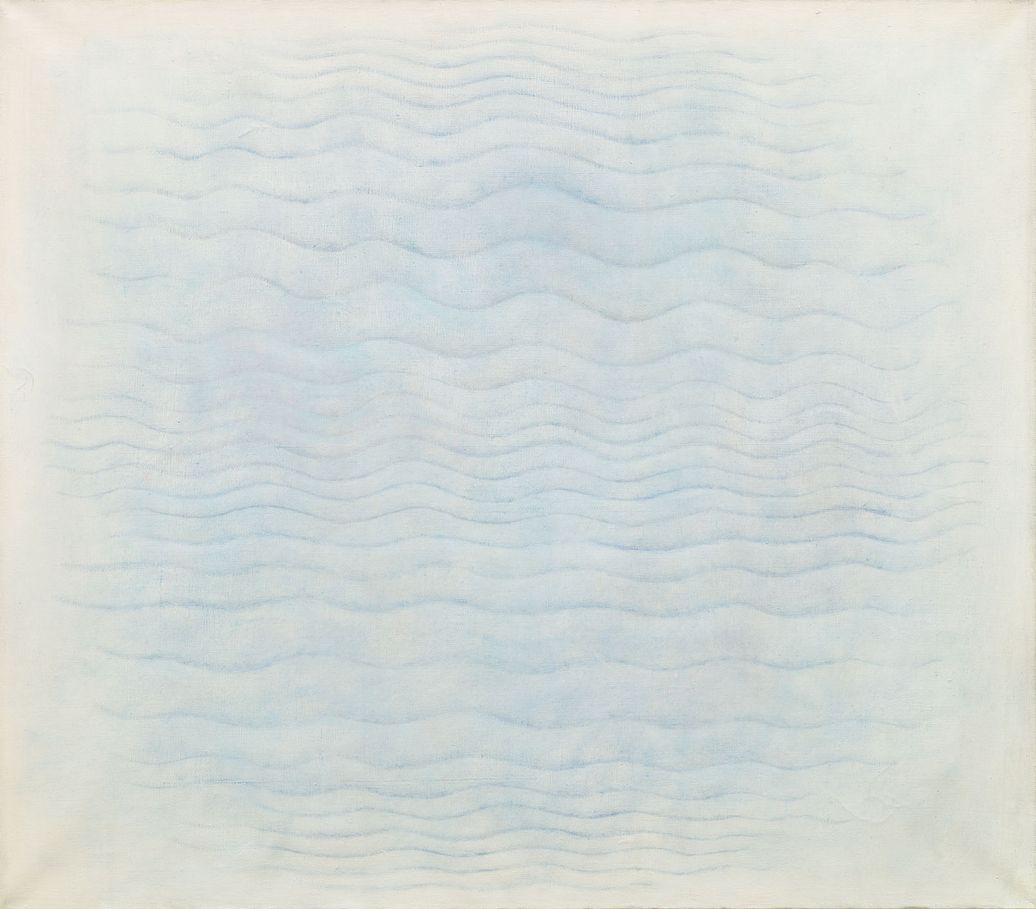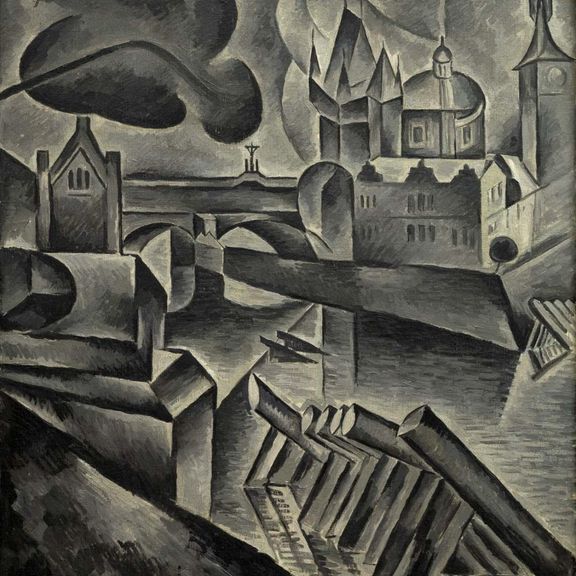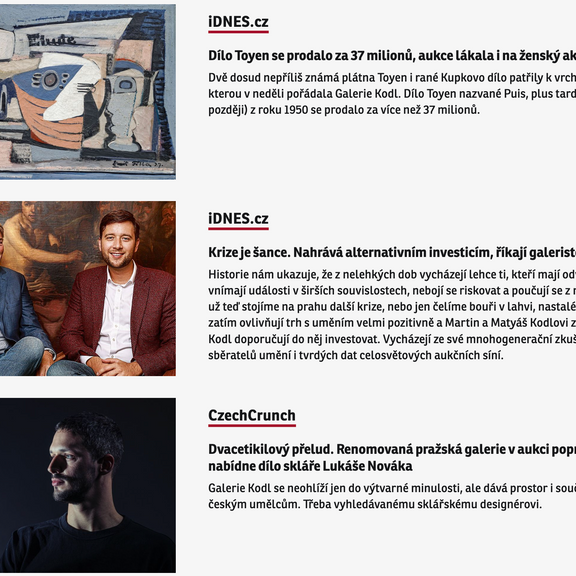
oil on canvas
1980
on the reverse
70 × 81 cm
framed
This masterpiece from the artist’s sought-after period is a very representative example of Boštík’s unmistakable work. This admirable artist became one of the key representatives for Czech fine art in the post-war years, as not only a painter, but also a graphic artist, illustrator, typographer, restorer, art theorist, and poet. His early abstract work was based on symbols, but then he started approaching the canvas as a universe on its own, in which he tried to concentrate scattered forces. He was interested in the inner energy of painting, the tension between lines and axes and between shapes. The metaphysics of painting and its principles became the meaning of his lifelong search; the surface of the canvas was a space of almost scientific research for him. In addition to three important paintings from 1980, which elaborate on the motif of a rectangle inscribed in a rhombus, Boštík executed several smaller paintings, to which he apparently attached considerable importance. For him, they marked the beginning of his new journey, in which he freed himself from previous cycles of geometrically divided surfaces and began to study the tension of waves. The presented painting, Wave Motion, belongs to this category. The vibrating lines were modelled by soft shades whilst the artist was looking for the inner energy of the force field. This subtle meditative painting of a square format reflects the artist’s masterful painting skills as well as his lifelong rumination over the meaning of artistic depiction. The painting was exhibited in the Prague City Gallery at the turn of 2010 and 2011 (Václav Boštík 1913…2005) and is reproduced in colour in the artist’s largest monograph (K. Srp: Václav Boštík, Prague 2011, cat. No. 353, p. 346). Assessed during consultations by prof. J. Zemina and PhDr. J. Machalický. From the attached expertise by PhDr. K. Srp: “[...] The concept of waves helped Boštík deepen his brushwork by loosening their spacing, which was closer or wider, more obvious or, on the contrary, disappearing. This way he reached the threshold of immateriality. The subtlety that characterises Boštík’s paintings is accompanied [on the presented painting] by a meditative inner reflection expressed in shades of blue. The author executed only a few paintings of the linear waves subject-matter in 1980. This painting is a great insight into Boštík’s cosmogenic reflections, which were gradually changing. [...]”







